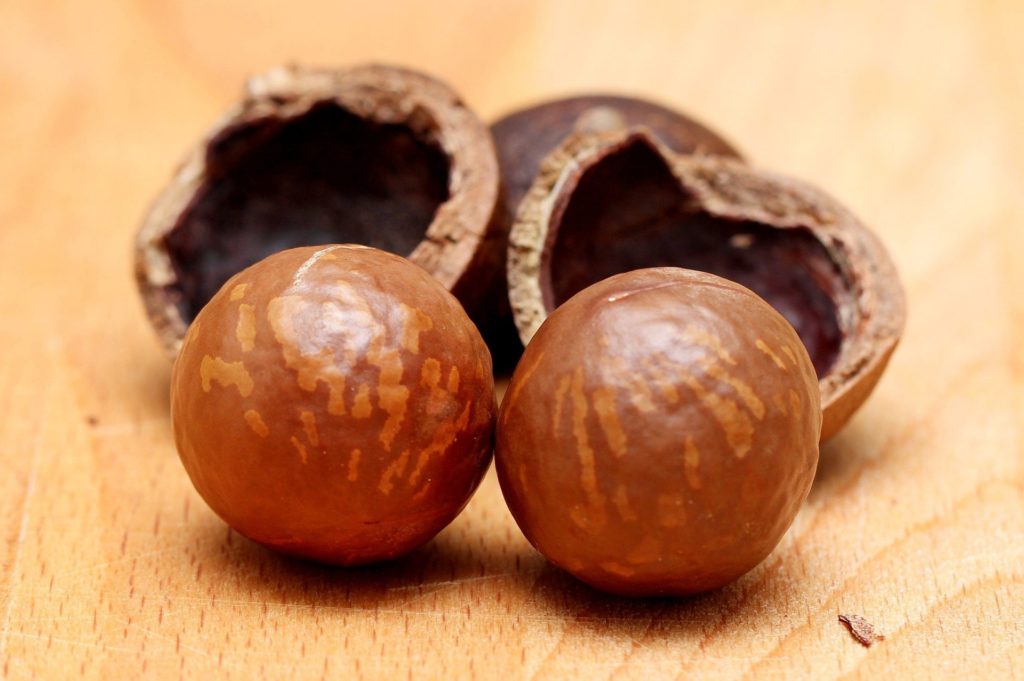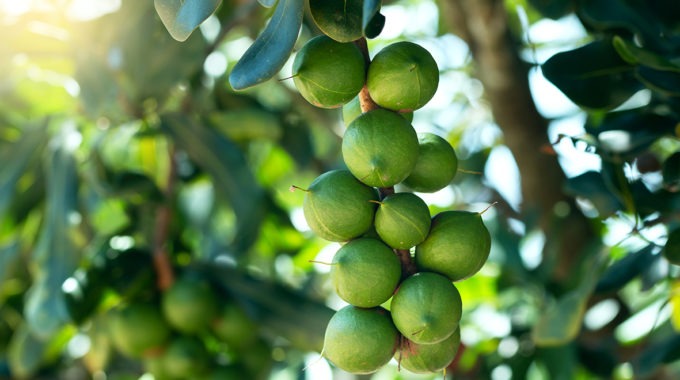Hort innovators crack a tough nut
Researchers have found a way to breed macadamias with thinner shells, bigger kernels and tougher husks to resist pests, in a move that could lead to a big boost for the industry.
“Two thirds of every harvested kilogram is in the weight of the macadamias’ extremely tough shells. That’s a lot of wasted productivity,” says Professor Bruce Topp, who leads the $2.2 million, Horticulture Innovation Australia-funded National Macadamia Breeding and Evaluation Program at the Queensland Alliance for Agriculture and Food Innovation.
“The goal for many growers is to produce less shell and more kernel from each nut, but with the shell still tough enough to resist pests.”

Macadamias are Australia’s second biggest nut export, predicted to be worth $350 million by 2025. The nuts are native to south-east Queensland and northern NSW, but are grown commercially in other countries around the world, including Hawaii, South Africa and Brazil.
Tough outer husks help protect the nuts from pests, and thinner, inner shells produce larger nuts and bigger profits. However, thinner shells also improve access for the macadamia nut borer, a native pest which causes a lot of damage to young fruit. This requires more on-farm management, but biological control strategies are used widely and successfully.
“Growers introduce wasps to control borer moths and owls to eat rats,” Professor Topp says. “Rats and cockatoos quickly identify trees with thinner-shelled nuts.
“Building on decades of research, we are trialling sophisticated genomic technologies in the field, aiming to boost Australian macadamia growers’ productivity and profitability.”

Hort Innovation’s Dr Vino Rajandran says the global macadamia industry is currently using cultivars more than 60 years old and just a few generations from the wild.
“As a comparison, almonds have been cultivated for millennia,” he says. “Based on other crops, we estimate that the macadamia is only yielding around 30 percent of its potential.
“We are identifying molecular markers for key growth and production traits in diverse, wild macadamia samples. We hope this research will make Australian-bred macadamia cultivars the commercial, global varieties of choice.”
Professor Topp says the program is also breeding for genetic resistance to husk spot – a fungal disease that causes immature nut drop and cuts around $10 million from industry profits a year – and smaller, warmer climate-adapted, high-yielding macadamia trees.









